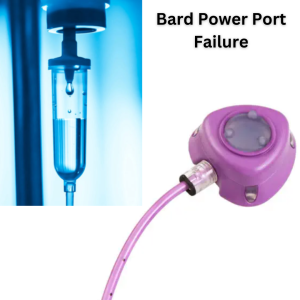
Medical devices have significantly improved patient care, allowing for more effective treatments and a better quality of life. Among these devices is the Bard PowerPort, a small implantable device used for accessing veins. While it serves crucial functions, there have been alarming issues regarding the lack of adequate warnings about potential risks by its manufacturers.
Understanding the Bard PowerPort
The Bard PowerPort is designed for patients needing long-term venous access. This is common in treatments like chemotherapy, where medications are delivered directly into the bloodstream. The device consists of a small reservoir placed under the skin, usually in the chest, connected to a vein by a catheter. Medical professionals can then access the port using a special needle, reducing the need for multiple needle sticks.
The Issue of Failure to Warn
Manufacturers of medical devices have a legal and ethical obligation to inform healthcare providers and patients of any potential risks associated with their products. This process is known as the “duty to warn.” Unfortunately, in the case of the Bard PowerPort, there have been significant shortcomings. If you or a loved one has been affected, consulting an experienced product liability lawyer can help you understand your rights and explore your legal options.
Known Complications
Reports have surfaced about various complications associated with the Bard PowerPort, including:
- Infections: Despite being implanted under the skin, some patients have experienced severe infections. These infections can lead to serious health problems and require additional medical treatments, which can be both costly and painful.
- Thrombosis: This is the formation of blood clots in the vein where the catheter is placed. Thrombosis can cause swelling and pain and can potentially dislodge, leading to life-threatening conditions like pulmonary embolism.
- Catheter Fracture: There have been cases where the catheter attached to the PowerPort has fractured or broken. This can result in the catheter traveling through the bloodstream, which is extremely dangerous.
The Manufacturer’s Role
The manufacturers of the Bard PowerPort, like any medical device manufacturer, are responsible for conducting thorough testing and research to identify potential risks. Once these risks are known, they must be communicated clearly to healthcare providers and patients.
In the case of Bard PowerPort, it appears that the manufacturers failed in this duty. Many patients and healthcare providers have reported that they were not adequately informed about the risks associated with the device. This lack of information has led to patients experiencing serious, sometimes life-threatening complications that they were not prepared for.
Legal and Ethical Implications
The failure to warn about the risks of the Bard PowerPort has significant legal and ethical implications. Legally, patients who have suffered due to these complications may have grounds to file lawsuits against the manufacturers. There have been several cases where affected patients have taken legal action, seeking compensation for the losses they suffered.
Ethically, the manufacturers’ failure to warn is considered a disregard for patient safety. Medical device companies must prioritize the well-being of the patients who rely on their products. By not providing adequate warnings, Bard PowerPort manufacturers have failed to uphold this crucial responsibility.

The Path Forward
To prevent further harm, it is essential that the manufacturers of Bard PowerPort and other medical devices take the following steps:
- Enhanced Transparency: Manufacturers must be transparent about all known risks associated with their devices. This includes updating healthcare providers and patients regularly as new information becomes available.
- Improved Testing: Rigorous testing should be conducted to identify potential complications before the devices are brought to market. Any issues discovered should be communicated immediately.
- Education and Training: Healthcare providers should receive comprehensive training on the risks and proper use of devices like the Bard PowerPort. This ensures they can make informed decisions and adequately inform their patients.
- Continuous Monitoring: Post-market surveillance should be a standard practice. This involves continuously monitoring the device’s performance in real-world settings and addressing any new risks that arise promptly.
Conclusion
The Bard PowerPort has undoubtedly provided significant benefits to many patients requiring long-term venous access. However, the failure to adequately warn about its risks has led to severe consequences for some. Manufacturers must prioritize patient safety by being transparent, conducting thorough testing, and ensuring proper education for healthcare providers.







